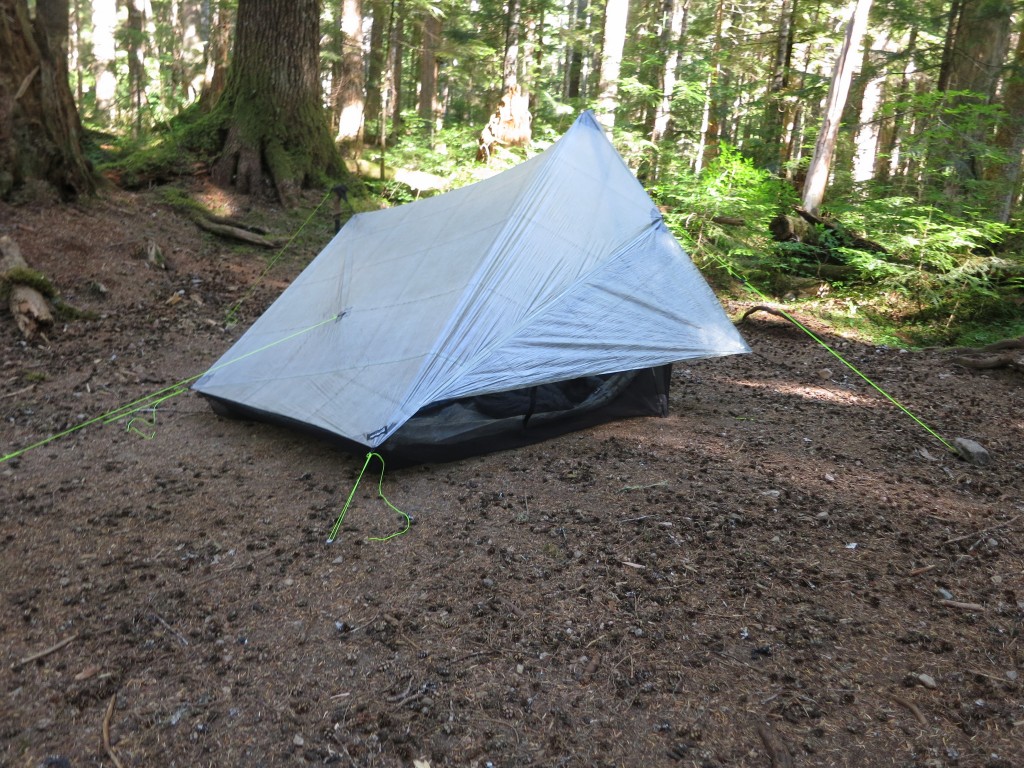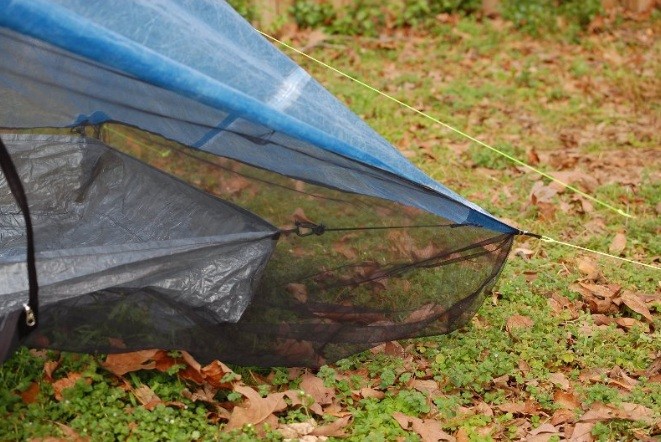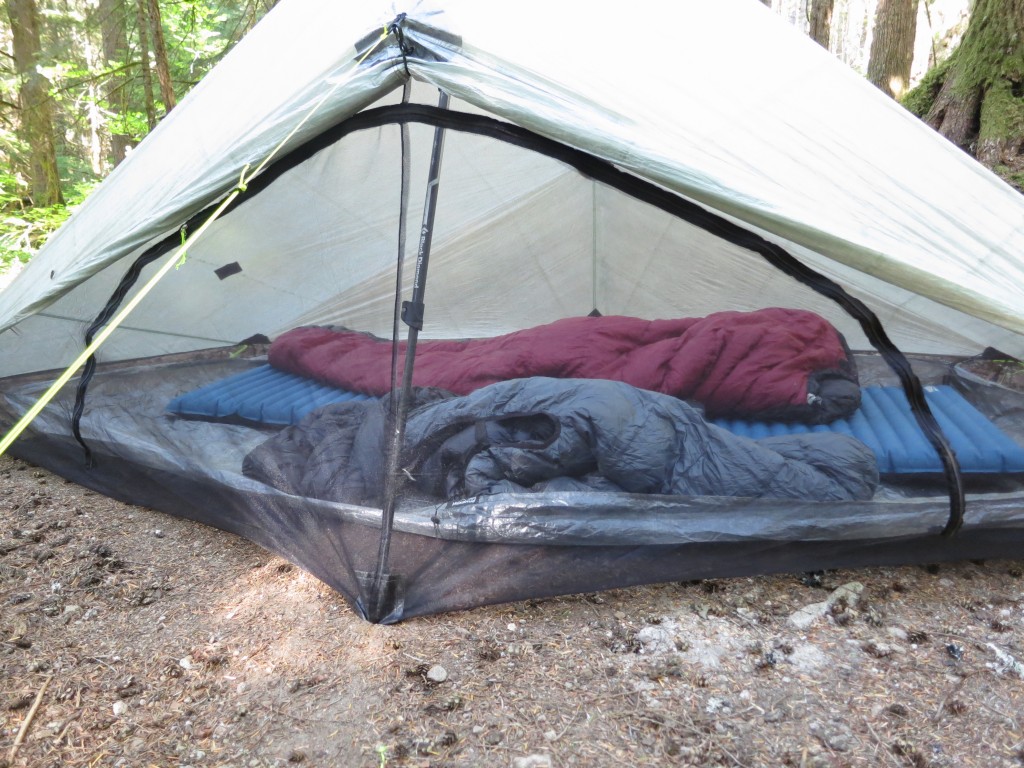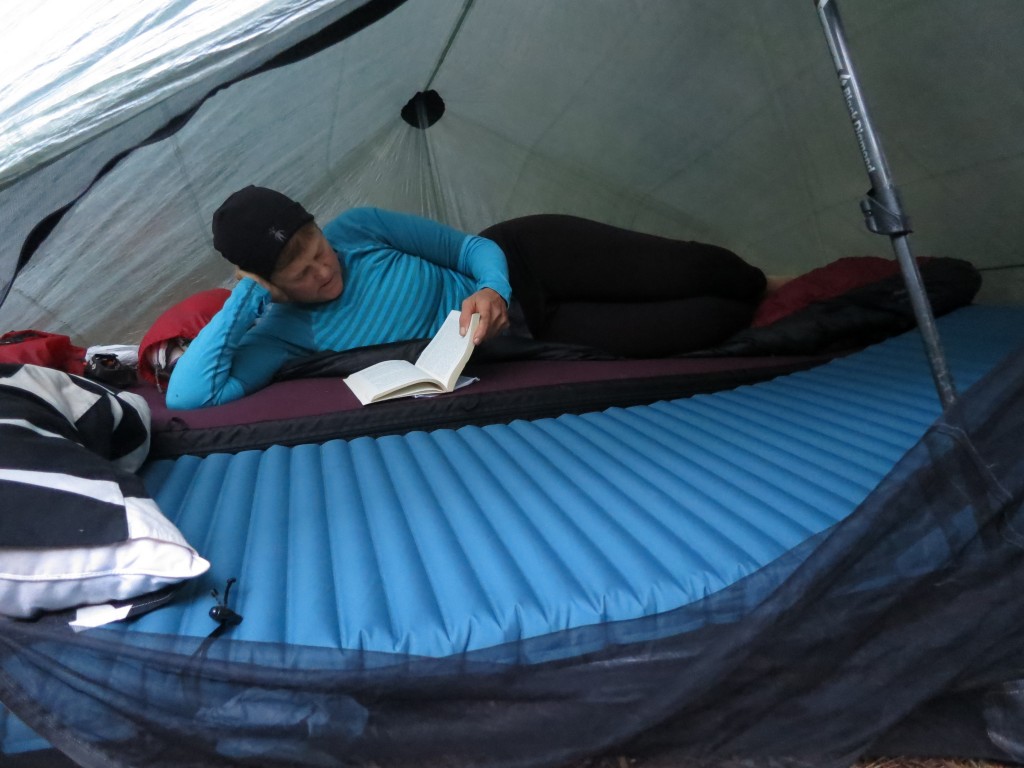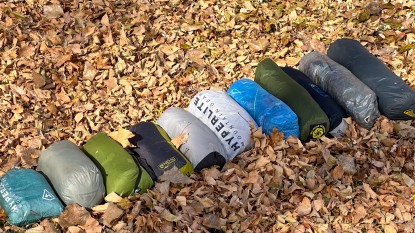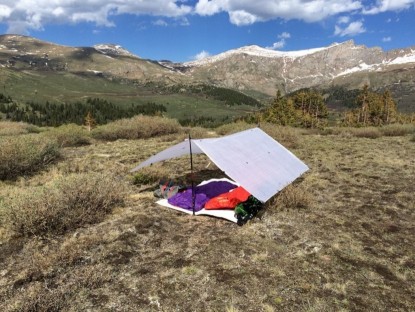However, ordering the Hexamid is not convenient since it is not available from major retailers and only directly from the small manufacturer in Florida (made-to-order, involving long delays in delivery). But, if you can get past the idea of waiting, you won't be disappointed. If you're in search of an ultralight tent immediately, consider the MSR Twin Sisters, which retails for $300.
If you are looking for an ultralight shelter that can also work for other activities, such as climbing and skiing, we suggest a flat tarp like the Hyperlite Mountain Gear Square Flat Tarp, which is much more adaptable and versatile than the Hexamid's fixed pyramid shape. For winter travel or multi-sport expeditions, we recommend the Mountain Laurel Designs SuperMid, which provides bomber storm protection and space for up to four people. We compare all of these shelters and others in our Ultralight Tent Review.ZPacks Hexamid Twin Tent Review
Our Verdict
Our Analysis and Test Results
2015 Version of the Hexamid Twin Tent vs. The One We Tested
Take a look below for what ZPacks has to say about the new Hexamid Twin Tent:
- ZPacks
Hands-On Review
There are many different versions of this tent. For reasons described at the bottom of this page, we feel that the version tested (the Hexamid Twin Tent with two optional accessories: Screen and Extended Beak) offers the best performance and value for backpacking.
Performance Comparison
Ease of Setup
The Twin Tent pitches with two adjustable trekking poles or optional carbon tent poles. We find that it takes some fiddling — more than with A-frame tarps, flat tarps, or unipolar pyramid tarps—to adjust the angle and tension of the tieouts to get a tight pitch. Practice at home and on a trip with protected campsites before going big.
The tent comes with guyline. Use the bowline to attach it to the tent and trucker's hitch to stake the tent out. ZPacks pitching instructions are here. Knot tying instructions are here.
Weather Resistance
The Hexamid's design is brilliant in that it provides four-sided weather protection without having a zippered door in the outer tent, unlike pyramid tarps and all double wall tents. You enter by ducking under the porch by the front trekking pole. The Screen accessory, which we tested and we recommend, adds a bug mesh inner tent that creates a fully enclosed tent that protects from flying and crawling insects. Unlike every other enclosed tent we've ever tested, the Hexamid's floor is made entirely of mesh, not a waterproof material. The advantage here is versatility and lower weight. If you are using an inflatable pad that needs protection from sharp objects that might pop it, you can choose from a variety of optional floors. We tested the bathtub style cuben fiber Groundsheet that clips inside the tent above the mesh. This accessory's raised walls can help to deflect splashback and water that runs along the ground. You can also use any other groundsheet (we recommend polycro), or backpacks, pack liners, etc. and put them either above the mesh or below it. If you use a closed cell foam sleeping pad, there is no need for a groundsheet.
The Hexamid's outer walls extend to roughly six inches from the ground and protect from wind and driving rain very well. In one severe thunderstorm, the mesh walls prevented almost all splashback (rain running off the roof and bouncing off the ground) from entering the tent. In this instance, we felt the bathtub walls of the Groundsheet helped to keep us drier by channeling water under the floor and by stopping the little bit of splashback that came through the mesh. With the Groundsheet, the tent handles torrential downpours as well as backpacking tents.
The Hexamid's imperfect pitch is made up for, in no small degree, by cuben fiber's very high tear strength. By default, the Hexamid features 0.51 oz/yd2 cuben fiber. This material has an INCREDIBLY HIGH tear strength. For example, it is more than twice as strong as the silnylon used on the Antarctic and Himalayan frequenting Hilleberg Nammatj and Hilleberg Tarra! The strength of the Hexamid's material offsets the fact that its sub-optimal pitch and steep walls catch the wind. Though we have yet to test the tent in very high winds, we are confident that the tent would perform very well in 99 percent of backpacking applications. Many other people have used it on the PCT, CDT, AT and long hikes in other countries.
We do not recommend the Hexamid for use in heavy snow. It is a three-season backpacking tent.
Livability
Balancing weight and comfort is the ultimate tradeoff in tent design. Generally, ultralight tents are not very comfortable to spend time inside, which is fine for hiking-inspired backpacking because it is more comfortable, overall, to carry less weight on your back for the majority of waking hours than be in a heavier, slightly more comfortable tent for the minority of waking hours. On cross-over trips that involve some hiking and also considerable time spent awake in camp, a comfortable tent can make lazy, rainy mornings and reading in the tent more enjoyable. The Hexamid strikes the sweet spot between low weight and all-purpose backpacking comfort. It is both light enough for the fastest and longest hikes and comfortable enough for lounging in during casual outings with family and friends.
The Hexamid's interior is very spacious when compared to most ultralight tents that pitch with trekking poles. It is also much more comfortable than ultralight double wall backpacking tents that pitch with dedicated poles (e.g.,Big Agnes Fly Creek Platinum and Terra Nova Solar Photon 2), which are very narrow and claustrophobic.
The tent is tall enough to sit upright by the door. When lowered, the Beak creates a small vestibule that can shelter a small amount of gear from rain. The Groundsheet is wide enough to fit one 25" wide sleeping pad and one 20" wide pad. Using two 20" wide pads — the most common pad width for backpacking — creates some extra space between people or for stashing gear along the sides.
Most single side entrance tents are difficult to enter and exit because one person has to crawl over the other person. But the Hexamid's generous length and height and wide door allow the person closest to the door to lift their feet to let the other person in or out. Therefore, we do not feel the single side entrance is a significant drawback.
The photo below shows the tent with two 25" wide sleeping pads, which barely fit and would likely be a poor choice in the rain. However, the image illustrates that the Hexamid is much wider than many other ultralight tents in which you can barely squeeze two 20" pads.
Durability
The mesh on the ground, Groundsheet on top of mesh concept has proven to be far better and more durable than expected. As ZPacks points out, small sharp objects like pine needles can go right through the mesh without damaging it. If you do tear a hole in the screen, it can be patched by sticking cuben fiber repair tape on both sides, a task that takes less than five minutes.
For only $15 more, the Hexamid can be built with a stronger and more durable 0.74 oz/yd2 cuben fiber. This more robust material is used, by default, on all Hyperlite Mountain Gear and Mountain Laurel Designs cuben shelters. Through testing the Hexamid and the ZPacks Square Flat Tarp we've found that that the lighter cuben fiber is significantly more prone to punctures (this is cuben fiber's most significant weakness) than the heavier option. Fortunately, cuben is perhaps the easiest material to patch out of any used on tents; clean the area around the hole (ideally with an alcohol swap) and stick on some cuben fiber repairtape.
Weight/Packed Size
As tested the Hexamid Twin Tent with Beak and Screen weigh 13.25 ounces. The included stuff sack weighs only 0.25 oz. This model is EXTREMELY LIGHT!!
When split between two people the Hexamid weighs about as much as one ProBar and one Snicker bar. This shelter feels lovely when you pull the tiny, feathery light package out of your pack, set it up, and have complete and spacious protection from rain, wind, and insects.
The ZPacks Groundsheet weighs 4.3 oz.
The Hexamid's low weight and protection from insects make it our favorite tent for bike touring (use two optional carbon poles available from ZPacks and Ruta Locura, about 4 oz.). Two testers used the tent for a three-day 350-mile ride around Washington State's Olympic Peninsula.
Adaptability
The most significant drawback to all pyramid shelters is their limited adaptability. They must be pitched the same way every time. For backpacking, this is rarely a limitation for the Hexamid because: (1) it is compact enough to fit in established campsites, and (2) if hiking off trail, where there are no established sites, you can identify potential flat areas ahead of time by looking at topo maps.
The Hexamid's fixed design restricts its use to three-season backpacking and camping.
Best Application
Three-season backpacking and bike touring.
Value
The Hexamid Twin Tent with Screen, Beak, and Groundsheet costs $530. This model is a good value because the tent is the lightest one available that has bug protection, great weather protection, and above average comfort. We highly recommend this if three-season backpacking is your intended application and you either have the cash to push the performance envelope or do a lot of backpacking.
For comparison purposes, the two lightest pole supported backpacking tents we've tested (the Terra Nova Solar Photon 2 and Big Agnes Fly Creek Platinum cost $440 and $550, respectively. The Hexamid weighs half as much as those tents and is more comfortable, too!
If you don't do a ton of backpacking or don't have the cash to push the performance envelope, consider the Mountain Laurel Designs Grace Tarp Duo), which performs very well and only costs $110.
Other Versions
The tent is available in three colors. We prefer Olive Drab because it is the stealthiest.
Hexamid Solo Tent- Cost - $450 ($100 less than the Hexapod Twin)
- Weight - 10.8 oz (2.2 oz less than the Hexapod Twin)
- Six-sided pyramid style tent for an average size solo hiker
Hexamid Solo-Plus Tent
- Cost - $495 ($55 less than the Hexapod twin)
- Weight - 13 oz (same as Twin Hexapod)
- A palace for one average sized hiker plus gear
- A good fit for an above average height person
- Large enough to occasionally squeeze in a partner
Accessories
Twin Cuben Groundsheet
- Cost - $120
- Total Weight - 4.27 oz
- More protective and more comfortable than a $10 polycro groundsheet that weighs the same
TIP: If you have the time and inclination you could make a bathtub floor groundsheet that clips into the inside of the tent (like the ZPAcks Groundsheet) out of polycro relatively quickly and for a low cost.


